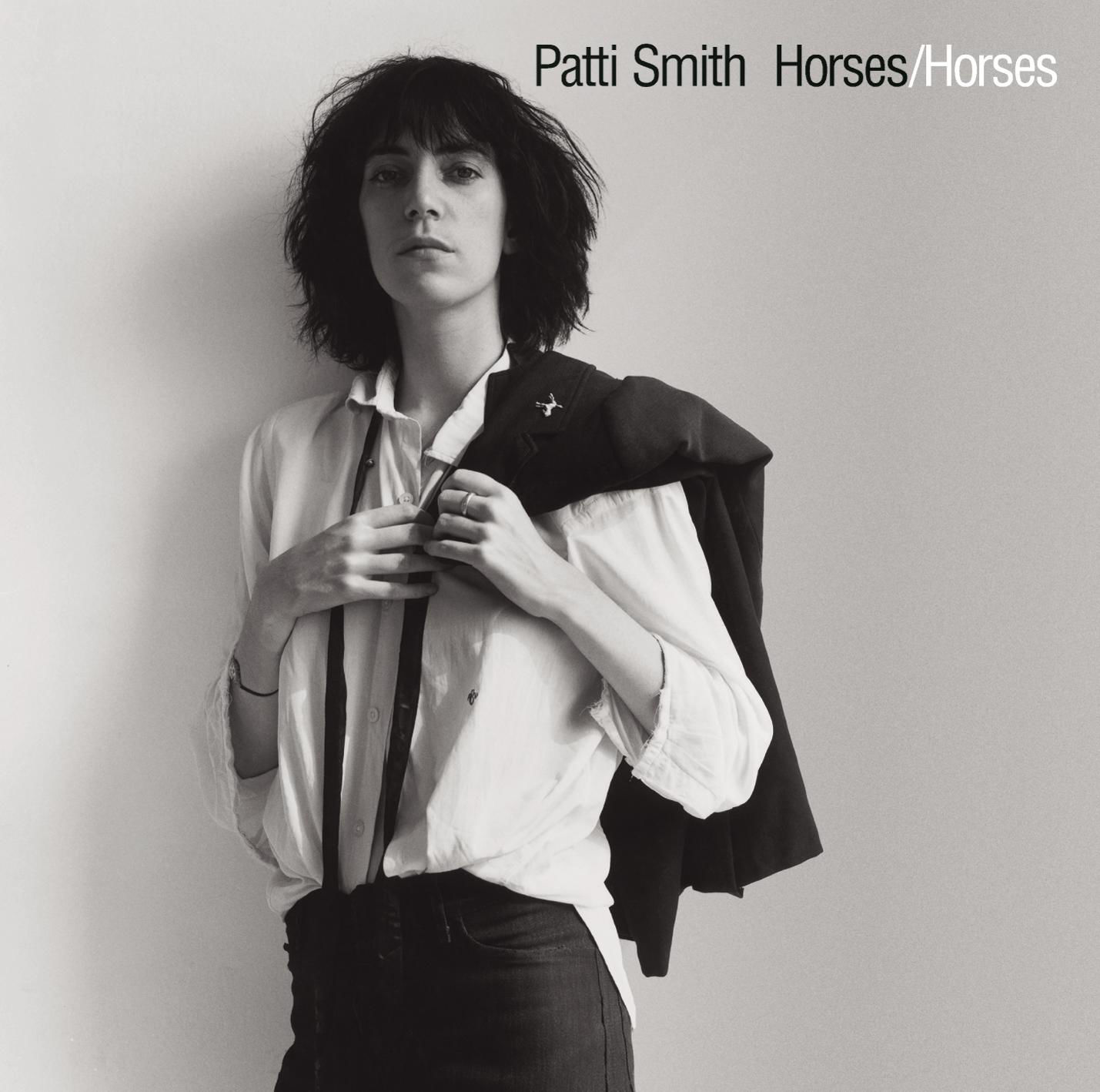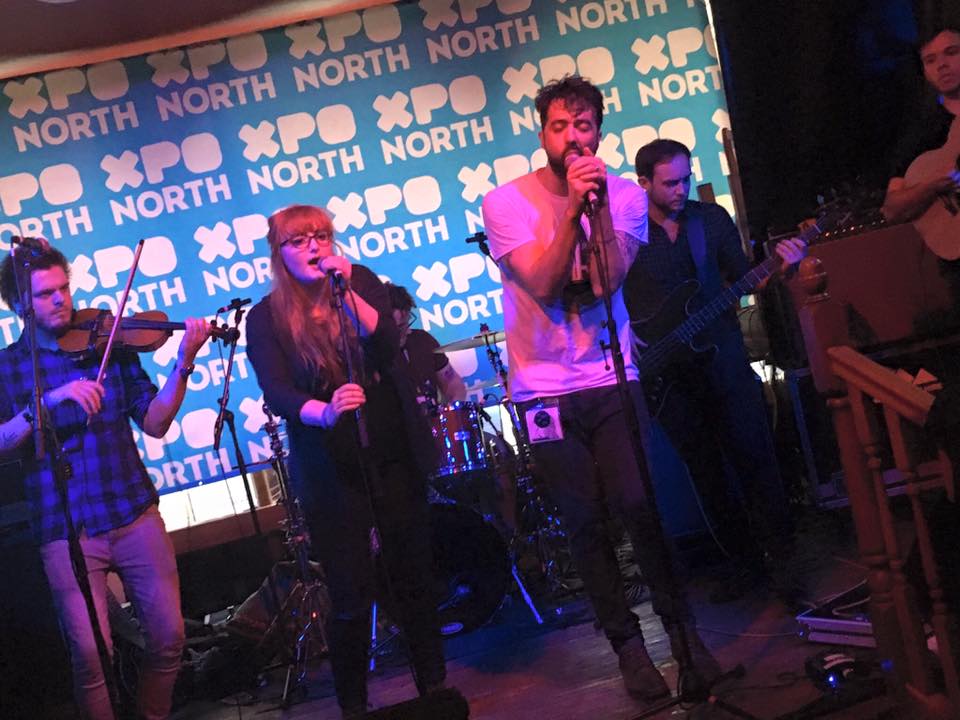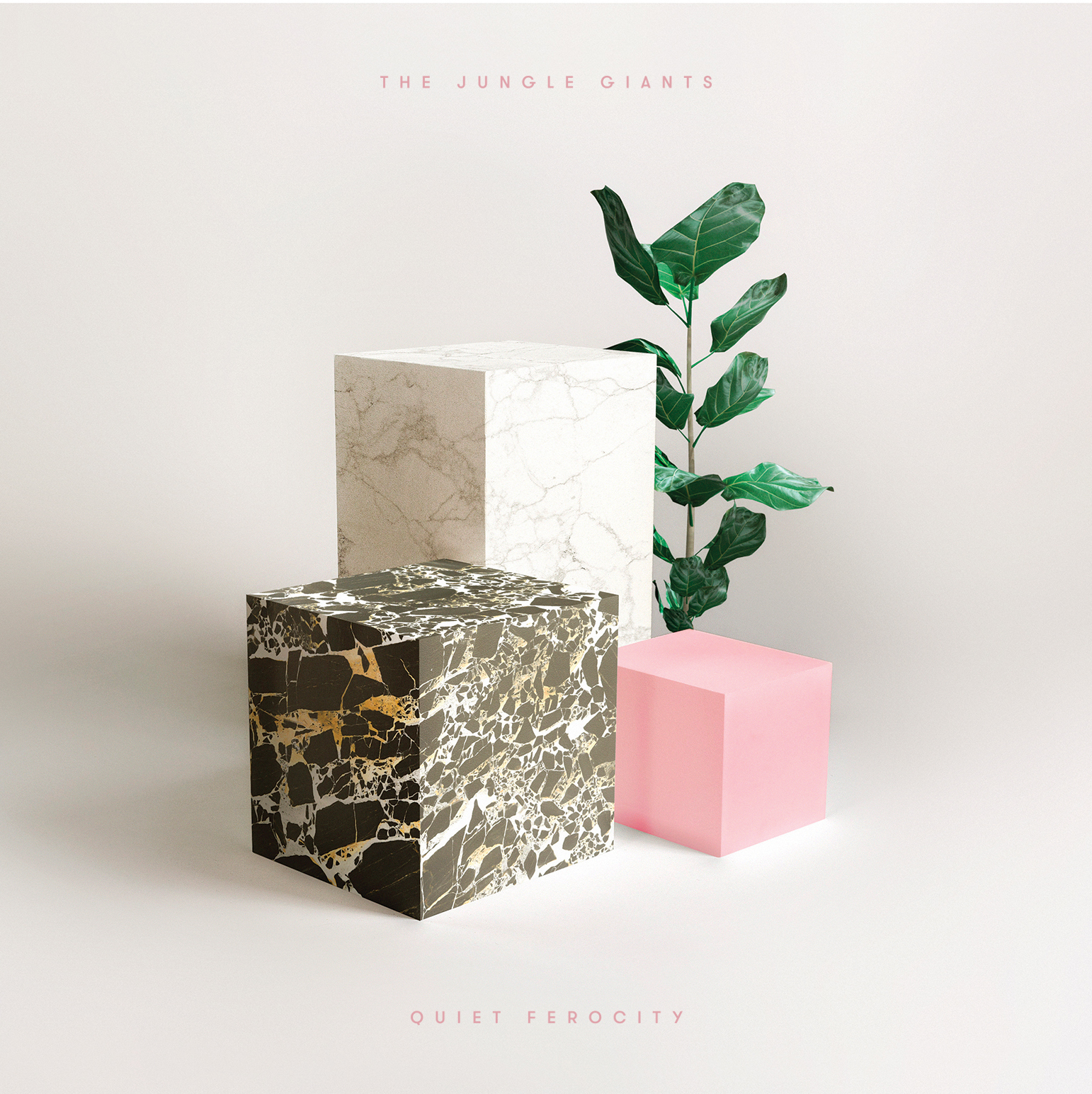
Towards the end of last year, Patti Smith’s 1975 debut album Horses turned forty years old. This seminal album was produced by John Cale and was recorded in Electric Lady Studios, an iconic recording studio made famous by Jimi Hendrix.
How can anyone write a piece about this album that does it justice? You cannot, the best option is to listen to the album yourself but here I will try anyway. Firstly, even before you have taken out the LP, CD or played the digital version, there stands this stoic, confident, nonchalant, androgynous person, staring right at you with a plain white shirt, a black jacket over her shoulder embedded with a horse pin and a black ribbon around her collar. This classic black and white photo was taken by Robert Mapplethorpe – ex lover, muse, and close friend to Smith.
The album starts with piano and bass simultaneously playing, producing this slow tempo, subdued atmosphere before Smith comes in with a spoken word delivery reciting the greatest opening lines to an album of all time “Jesus died for somebody’s sins, but not mine”. You know you have already experienced something truly special, all within twenty seconds of the album.
What is so profound about these lyrics is the fact the narrator believes in Jesus Christ but the narrator is not conforming to the dogmata found in Christianity. The narrator is living her life based on her own guided morals and her own definition of sin because she wants her own freedom, responsibility and to be free from religious confinement.
“Gloria (In Excelsis Deo)” is a reinvention of Them’s “Gloria”. The band transforms the well-known garage rock song into a powerful punk rock anthem. Smith completely changes the original story of the male narrator being seduced by the woman into an ambiguous song, playing around with gender identities.
When Smith sings about the sexual encounter, questions start increasing. Is it about a lesbian sexual encounter because the narrator is a female or is Smith singing from a male perspective and by doing so, highlighting the cliché rock story of man meets woman. Therefore, Smith is criticising part of rock’s heritage but also moving the rock genre onwards to better itself.
“Redondo Beach” is the second song on the album and is named after a beach in Los Angeles County. Musically a fusion of reggae and rock, the song is told by the narrator who is reflecting on a friend’s recent death after the friend committed suicide by drowning herself after an argument the pair had.
There were some musicians in a folk setting that were more like poets than singer-songwriters such as Bob Dylan, Leonard Cohen and Joni Mitchell but in rock, the closest were Lou Reed and Jim Morrison. Smith’s spoken word and free verse poetry expanded rock lyricism. Smith came from a new position, writing more important than music and having influences ranging from the French Symbolism poets like Charles Baudelaire and Arthur Rimbaud to other poets and writers such as William Blake, Allen Ginsberg, Jean Genet and William S. Burroughs.
In retrospect, this album is as an important proto-punk album but it is worlds apart from what would become of punk. This album transcends the zeitgeist and genres, with a few compositions heavily influenced by Reggae and Jazz, the latter being for the next track “Birdland”.
This is the first of the two epics on this album, clocking over nine minutes in length. It depicts a person grieving after the death of their father. Rich with imagery, symbolism and motifs of nature, it was inspired by A Book Of Dreams, the 1973 memoir of Austrian psychoanalyst Wilhelm Reich, by his son Peter Reich.
The next two tracks finish the trilogy of family inspired songs, the previous track being “Redondo Beach”, lyrics written in 1971 after a fight with her sister. “Free Money” starts as a piano based composition before the full band lead into a crescendo. The lyrics are about the idea of imagining winning the lottery, the inspiration coming from Smith growing up poor.
“Kimberly” is about Smith looking after her younger sister. Smith uses imagery from her childhood upbringing in New Jersey with apocalyptic imagery for the setting of the story. This enhances the sense of vastness to the world and the vulnerability of the younger sister, who needs guidance and nurturing from the older sister.
“Break It Up” was co-written with Tom Verlaine, the frontman for the New York rock band Television. The song has intense guitar riffs arriving at the choruses by Tom Verlaine, with Smith’s emotional singing. The song is based upon one of Smith’s dreams about Jim Morrison. The story plays out with him being alive with wings but is bound in marble until eventually he suddenly breaks free.
“Land” is final of the two epics, again clocking over nine minutes in length. “Land” is broken up into three segments: “Horses”, “Land Of A Thousand Dances” and “Le Mer (De)”. The first section, “Horses” beings with a spoken word introduction “The boy was in the hallway drinking a glass of tea, From the other end of the hallway a rhythm was generating”.
At that exact timing on the last word, a guitar commences playing into a crescendo passage. The use of three-chords mixed with Smith’s spoken word, tells this story of a boy named Johnny. At the start of the song, Johnny is raped in a locker room and as a result Johnny has a hallucination that he is being surrounded by horses.
The song then enters the second section with a part of “Land Of A Thousand Dances”, a rock and roll song written by Chris Kenner in 1963, it mentions sixteen dances. Patti Smith starts rattling off some of the dance crazes before returning back to Johnny, who is now resistant and there are homosexual undertones in the description of his belongings. The bands then enter into the third section playing “Le Mer De”. Then the narrator has visions of space travel, the ocean and horses. The ending of the entire song intertwines the narrator with Johnny before Johnny commits suicide.
This song is to intricate and abstract to have only one clear meaning. The four key areas are the power of rock and roll, Robert Mapplethorpe, William S. Burroughs and Jimi Hendrix. The first idea gives reason for the “Land Of A Thousand Dances” inclusion. Smith uses this to point out the evolution of rock and particularly in lyricism from the early rock and roll nonsense lyrics but at the same time paying homage to rock and roll. Smith remembered during making the album, “the gratitude I had for rock and roll as it pulled me through a difficult adolescence”.
After the suicide are these lyrics, “Saw this sweet young thing (Fender one), Humping on the parking meter, leaning on the parking meter”, almost the same lyrics as in the first song “Gloria” which also deals with the rock genre itself. Furthermore similar lines are referenced in Patti Smith book Just Kids when Smith describes Robert Mapplethorpe when he was waiting for her outside the Whitney museum because they only could afford one ticket.
Continuing with Robert Mapplethorpe, his creations of homoeroticism art in the late 1960s and 1970s in New York, possibly suggest the homosexual undertones are inspired from him. Smith said about William S. Burroughs, “Johnny’s confrontation in the locker room, was very inspired by William’s The Wild Boys. In The Wild Boys there is also a Johnny. My Johnny is a continuation of William’s Johnny”. Also, according to Smith “Land”, is a paean to Jimi Hendrix.
“Elegie” ends the album on a sombre tone. The composition is based around a piano producing this sorrowful sound and a consistent bassline with an intermittent guitar, generating these haunting sounds. Smith summarised “Elegie” as “remembering them all, past, present, and future, those we had lost, were losing, and would ultimately lose”.
Last year, Patti Smith toured behind Horses for its 40th anniversary, it is no wonder why. This album is still growing in its legacy. The originality and relevance of this album, is attracting young listeners like it is did in 1975 and for the returning listeners, Horses is there for them as some form of refuge. If you have never heard this album before, make sure to check it out. Purchase Horses on iTunes here.
Words by Jack Walters





